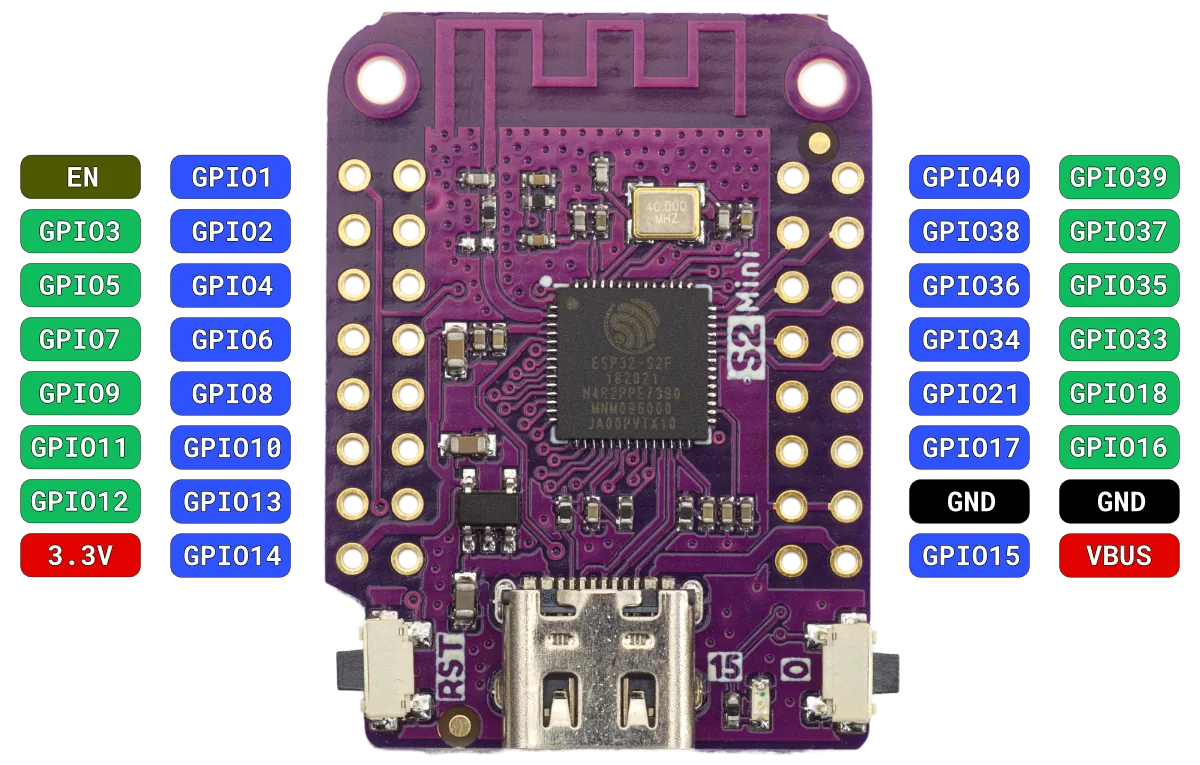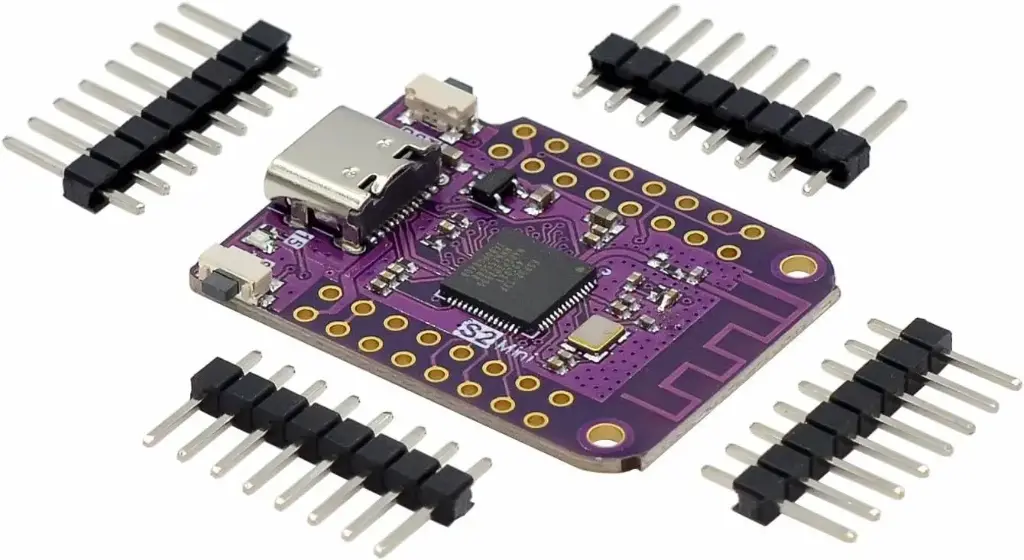Features
-
Built on the powerful ESP32-S2FN4R2 WiFi IC
-
USB Type-C interface for easy programming and power
-
27 Digital I/O pins, all supporting:
-
Interrupts
-
PWM
-
I²C
-
One-Wire communication
-
Onboard hardware peripherals include:
-
Compatible with MicroPython and Arduino IDE
-
Preloaded with MicroPython firmware
Specifications
| Parameter |
Value |
| Chipset |
ESP32-S2FN4R2 |
| Flash |
4MB embedded flash |
| PSRAM |
2MB embedded PSRAM |
| WiFi |
2.4GHz, IEEE 802.11 b/g/n |
| USB Interface |
Type-C USB |
| Digital I/O Pins |
27 pins |
| ADC Channels |
Yes |
| DAC Channels |
Yes |
| Communication Interfaces |
UART, SPI, I2C, I2S, USB OTG |
| Programming Support |
MicroPython, Arduino |
| Default Firmware |
MicroPython |
| Power Supply |
3.3V or via USB |
| Board Dimensions |
Mini form factor (similar to ESP8266 boards) |
Pinout

The ESP32-S2 Mini exposes a wide range of GPIOs suitable for various digital and analog functions. Here are some notable pin features:
-
GPIOs: 27 multifunctional pins
-
Power Pins: 3.3V, GND
-
Communication Pins:
-
Analog Pins: Multiple ADC and DAC capable pins
-
USB OTG capable via dedicated pins
Note
This board does not automatically appear on your computer when connecting to an IDE. To enter programming mode:
-
Press and hold the "0" (BOOT) button
-
While holding the "0" button, press and release the "RST" (Reset) button
-
Then release the "0" button
-
The board will now appear on a COM port for uploading firmware
Let me know if you want this in HTML or printable PDF format!
Features
-
Built on the powerful ESP32-S2FN4R2 WiFi IC
-
USB Type-C interface for easy programming and power
-
27 Digital I/O pins, all supporting:
-
Interrupts
-
PWM
-
I²C
-
One-Wire communication
-
Onboard hardware peripherals include:
-
Compatible with MicroPython and Arduino IDE
-
Preloaded with MicroPython firmware
Specifications
| Parameter |
Value |
| Chipset |
ESP32-S2FN4R2 |
| Flash |
4MB embedded flash |
| PSRAM |
2MB embedded PSRAM |
| WiFi |
2.4GHz, IEEE 802.11 b/g/n |
| USB Interface |
Type-C USB |
| Digital I/O Pins |
27 pins |
| ADC Channels |
Yes |
| DAC Channels |
Yes |
| Communication Interfaces |
UART, SPI, I2C, I2S, USB OTG |
| Programming Support |
MicroPython, Arduino |
| Default Firmware |
MicroPython |
| Power Supply |
3.3V or via USB |
| Board Dimensions |
Mini form factor (similar to ESP8266 boards) |
Pinout

The ESP32-S2 Mini exposes a wide range of GPIOs suitable for various digital and analog functions. Here are some notable pin features:
-
GPIOs: 27 multifunctional pins
-
Power Pins: 3.3V, GND
-
Communication Pins:
-
Analog Pins: Multiple ADC and DAC capable pins
-
USB OTG capable via dedicated pins
Note
This board does not automatically appear on your computer when connecting to an IDE. To enter programming mode:
-
Press and hold the "0" (BOOT) button
-
While holding the "0" button, press and release the "RST" (Reset) button
-
Then release the "0" button
-
The board will now appear on a COM port for uploading firmware
Let me know if you want this in HTML or printable PDF format!

